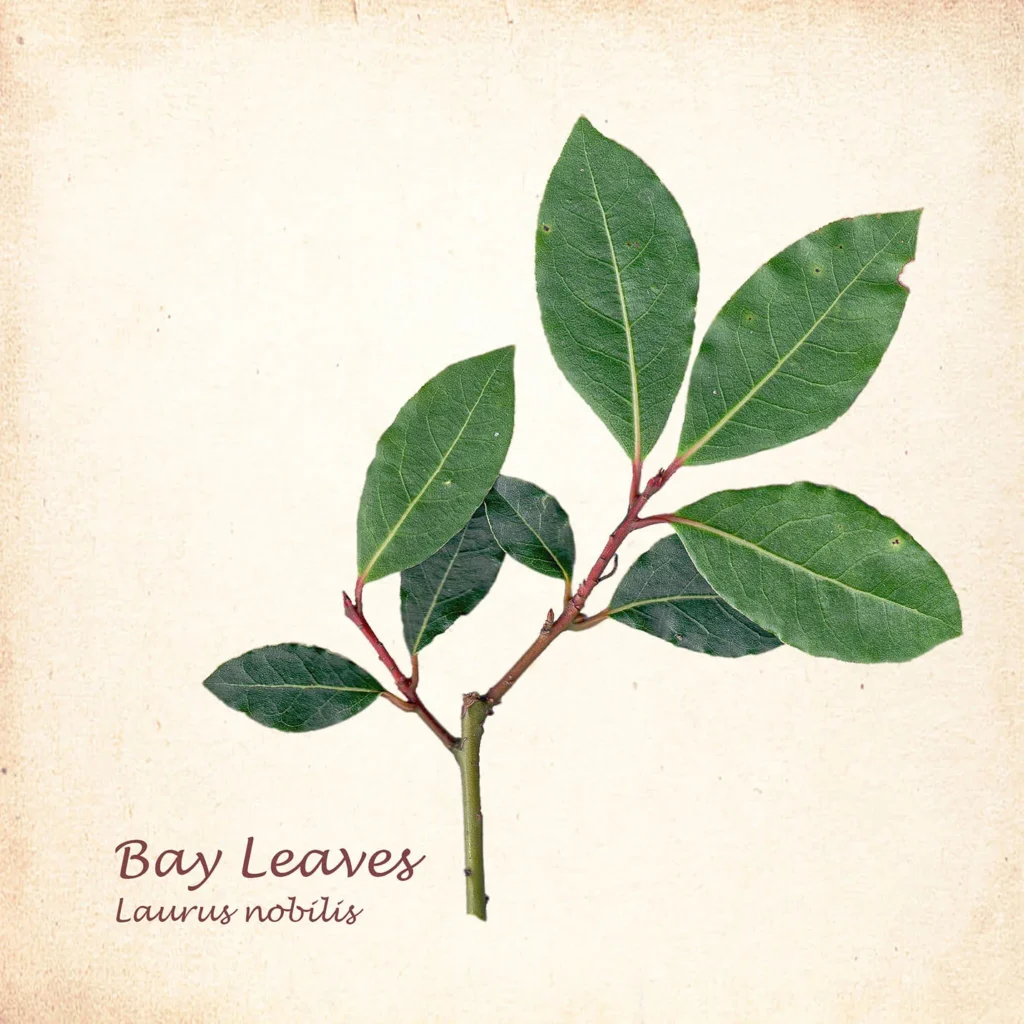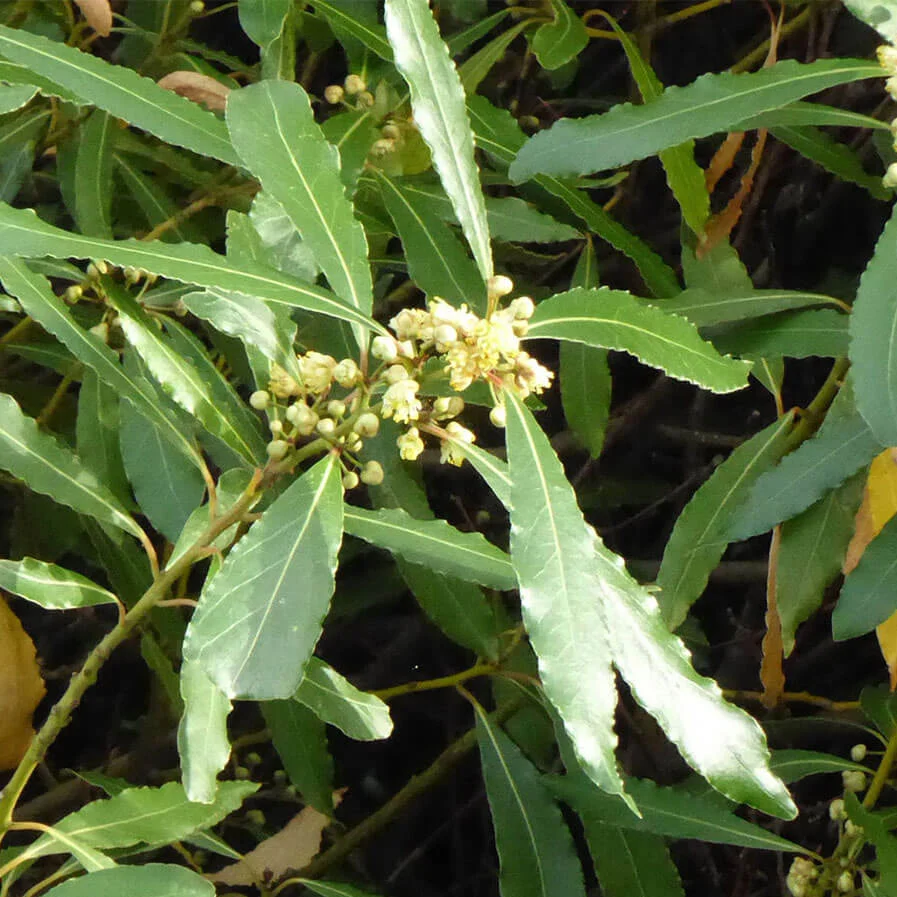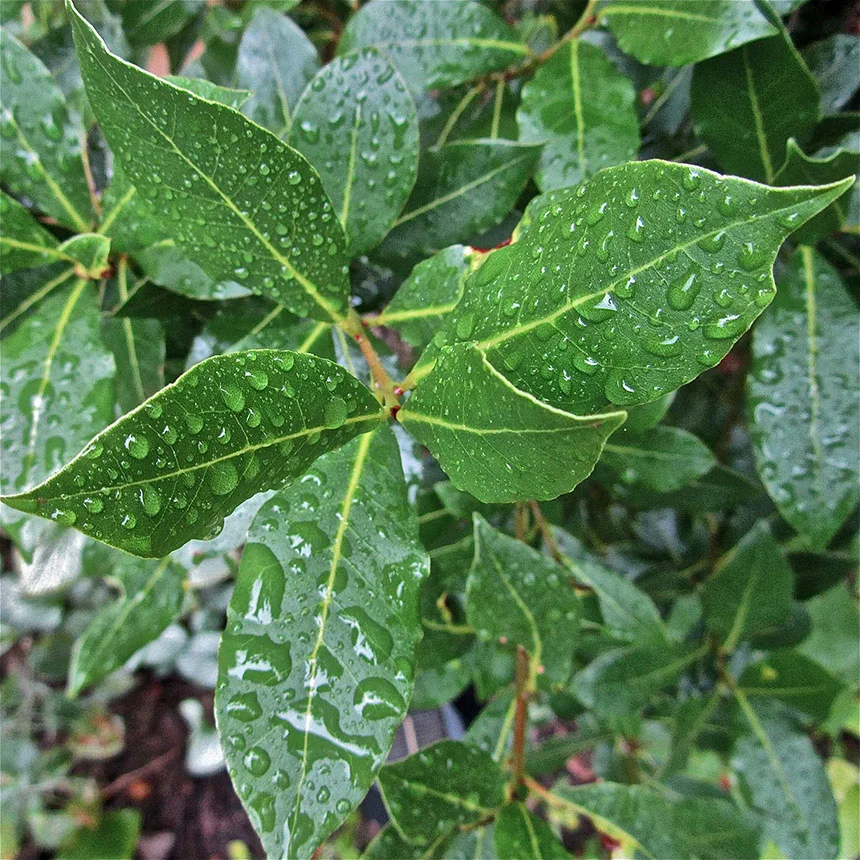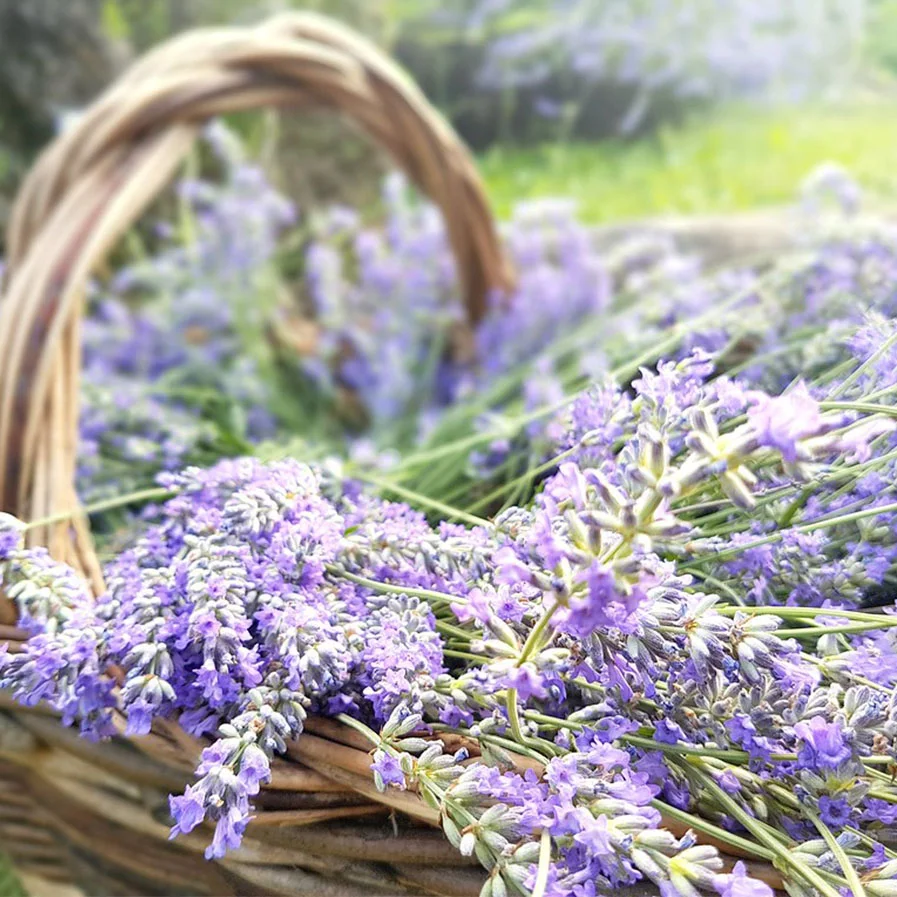How to Grow Bay Leaves

Bay Leaves on paper
Quick links to save you time
Why should you grow Bay leaves?
Bay leaves are a popular herb used to flavor stews, casseroles, and other liquid-based dishes, and they can be grown in your garden.
Let me give you some reasons to grow them:
- Easy to grow: Growing bay leaves is easier than you might think. They are hardy in zones 7-10, and you can grow them year-round in warm temperatures.
- Freshness: Bay leaves are better if you grow your own. Fresh bay leaves taste more intensely than dried ones, and you can harvest them anytime.
- Convenience: Having a bay leaf plant in your garden means you can effortlessly harvest a sprig or two regularly, so you always have plenty of aromatic leaves to hand.
- Cost-effective: Growing your bay leaves can save you money in the long run, as store-bought bay leaves can be expensive in some places.
- Aesthetics: Bay leaves are an attractive evergreen shrub that can add beauty to your garden. You can grow them as a tree, use them in a topiary to create ball-shaped plants, or grow them as a hedge.
Bay Leaves in Landscaping

Bay Leaves Cone Topiary Trees
- As a tree: Bay leaves can grow into a short tree, reaching up to 30 feet or roughly 9 meters tall. Their dense, evergreen canopy provides shade and privacy, making them a great addition to any garden.
- As a hedge: Bay leaves can be pruned into a fence, creating a natural barrier around your property. They are easy to shape and maintain, and their dense foliage makes them an effective privacy screen.
- In a container: Bay leaves can be grown this way, making them an excellent option for small gardens or balconies. Select a large container with good drainage and a well-draining potting soil mix. Prune them to keep them small and compact. A small and beautiful Laurel tree is an excellent option for container gardening.
- As a topiary, you can prune them into various shapes, including balls, cones, and spirals. They are easy to shape and maintain, and their dense foliage makes them ideal for topiary.
When planting bay leaves in your garden, choose a warm, sheltered site with free-draining soil.
Bay Leaves Varietals
The most common are Mediterranean Bay Leaves, or Laurus nobilis (also known in some locations as Turkish Bay Leaves), and Californian Bay Leaves, or Umbellularia californica.

Cardamom Allegory
Credit Alberto Conde, Kitchen In The Med
Here are 10 of the most famous Bay Leaf varietals

Laurus Nobilis
Mediterranean bay leaf (Laurus Nobilis):
This is the most common variety of bay leaf used in Mediterranean, Middle Eastern, Indian, and European cuisine. It has a subtle flavor and is the type of bay leaf most commonly called for in recipes.

Umbellularia californica, California Bay Leaf
California bay leaf (Umbellularia californica):
This variety comes from the California bay tree and has a more robust, minty flavor than Mediterranean bay leaves. Use it cautiously, as its flavor can easily overpower a dish.
Cinnamomum tamala, Indian Bay Leaf
Indian bay leaf (Cinnamomum tamala):
Also known as malabathrum, this type of bay leaf has a cinnamon-like flavor and aroma. It is used in Indian cuisine and is not interchangeable with other types of bay leaves.

Syzygium polyanthum Indonesian Bay Leaf
Indonesian bay leaf (Syzygium polyanthum):
Also known as salam leaf, this type of bay leaf is used mainly in Indonesian and Malaysian cuisine. It has a slightly sweet flavor and is used to season meat dishes.

Pimenta racemosa, West Indian Bay Leaf
West Indian bay leaf (Pimenta racemosa):
This type of bay leaf is used in Caribbean cuisine and has a robust and spicy flavor.

Litsea glaucescens, Mexican bay leaf
Mexican bay leaf (Litsea glaucescens):
This type of bay leaf is used in Mexican cuisine and has a substantial, eucalyptus-like flavor.

Laurus Nobilis, Bay Leaf Tree
French laurel bay leaf:
The Laurus Nobilis type from France.

Laurus Nobilis, Bay Leaf Tree
Cretan laurel bay leaf:
The Laurus Nobilis type from the island of Crete.

Persea Americana, Mexican Avocado Leaf
Mexican avocado leaf (Persea americana):
This avocado tree is a type of bay leaf used in Mexican cuisine with a subtle anise-like flavor.

Laurus Nobilis Undulata Crispa
Laurus Nobilis Undulata:
This slow-growing cultivar of bay leaf has wavy, undulating green leaves with yellow margins. The leaves have a mild flavor and are common in ornamental gardens. Undulata is less well-known than some of the other cultivars of bay leaf, but it is still a popular choice for gardeners who want to add a different plant to their landscape.
You can grow Bay Leaves in gardens and containers.
7 steps to grow Bay Leaves in Containers

Laurus Nobilis, Bay Leaf Tree
- Choose a container: Pick a pot or container at least 12 inches or 30 cm in diameter with suitable drainage holes.
- Use well-draining soil: Use a well-draining mix, such as soil-based or multi-purpose compost, with added grit to improve drainage.
- Plant an established tree: It’s best to start with an established bay leaf tree rather than trying to grow one from seed. Choose a healthy tree with dark green leaves and no signs of pests or diseases.
- Water regularly: Bay leaves need regular watering, especially during hot, dry weather. Water deeply once a week or more often if the soil is dry.
- Fertilize occasionally: Bay leaves benefit from occasional fertilization with a balanced fertilizer. Apply fertilizer in the spring and summer, following the manufacturer’s instructions.
- Prune as needed: You can trim Bay leaves to hold them in shape and promote new development. Prune in the summer and cut back hard in the spring to rejuvenate old plants.
- Harvest leaves as needed: Just as in the garden, Bay leaves can be harvested at any time of year, but avoid trimming more than a third of the plant’s leaves at a time. To harvest, pick a few leaves from the tree and use them in cooking.
7 steps to grow Bay Leaves in Gardens

Laurus Nobilis Aurea
- Choose a sunny spot: Bay leaves need plenty of sunlight to thrive, so pick a place in the garden with a minimum of six hours of direct sunlight daily.
- Ensure good drainage: Bay leaves prefer well-draining soil, so the ground in your chosen spot is not waterlogged.
- Plant an established tree: It’s best to start with an established bay leaf tree rather than trying to grow one from seed. Choose a healthy tree with dark green leaves and no signs of pests or diseases.
- Give it plenty of room: Bay leaf trees can grow quite large, so make sure you give your tree plenty of room to spread out. If you’re planting more than one tree, space them at least 10 feet apart.
- Water regularly: Bay leaves need regular watering, especially during hot, dry weather. Water deeply once a week or more often if the soil is dry.
- Prune as required: You can trim Bay leaves to hold them in shape and foster new growth. Prune in the summer and cut back hard in the spring to rejuvenate old plants.
- Harvest leaves as needed: Bay leaves can be harvested at any time of year, but do not trim more than a third of the plant’s leaves at a time. To harvest, pick a few leaves from the tree and use them in cooking.
A Summary of 10 Tips for Growing Bay Leaves

Laurus Nobilis in containers
- Choose a sunny spot: Bay leaves need plenty of sunlight to thrive, so pick a location in your garden with a minimum of six hours of direct sunlight daily.
- Ensure good drainage: Bay leaves prefer well-draining soil, so the ground in your chosen spot is not waterlogged.
- Plant an established tree: It’s best to start with an established bay leaf tree rather than trying to grow one from seed. Look for a healthy tree with dark green leaves and no signs of diseases or pests.
- Give it plenty of room: Bay leaf trees can grow quite large, so make sure you give your tree plenty of room to spread out. If you’re planting more than one tree, space them at least 10 feet apart.
- Water regularly: Bay leaves need regular watering, especially during hot, dry weather. Water deeply once a week or more often if the soil is dry.
- Fertilize occasionally: Bay leaves benefit from occasional fertilization with a balanced fertilizer. Apply fertilizer in the spring and summer, following the manufacturer’s instructions.
- Prune as needed: You can trim bay leaves to hold them in shape and promote new growth. Prune in the summer and cut back hard in the spring to rejuvenate old plants.
- Harvest leaves as needed: Harvest them at any time of year, but avoid trimming more than a third of the plant’s leaves at a time. To harvest, pick a few leaves from the tree and use them in cooking.
- Dry and store leaves: Place sprigs or individual leaves in a warm, dry room to dry bay leaves. Once dehydrated, store whole leaves in an airtight bag or container and use them within a few months before they lose their flavor.
- Protect from winter cold and wet conditions: Bay leaves are susceptible to winter cold and wet conditions, so protect them from harsh frosts and cold winds. In cooler regions, consider growing them in a container that you can move indoors once it gets cool outside.
Are Bay Leaves safe for pets?
Bay leaves do not pose a toxicity risk to humans; however, it’s essential to be aware that they can harm pets such as dogs and cats.
- Keep bay leaves out of reach: Bay leaves should be kept out of reach of pets, as even a tiny amount can cause digestive upset.
- Store bay leaves securely: If you store bay leaves in a bag or container, ensure they are securely closed to prevent pets from accessing them.
- Avoid using bay leaves in pet food: Bay leaves should not be used in pet food, as they can cause digestive upset.
- Watch for symptoms of toxicity: If your pet ingests bay leaves, watch for symptoms such as vomiting, diarrhea, and loss of appetite. If you notice any of these symptoms, contact your veterinarian for advice.
- Choose pet-safe plants: If you have pets, choose plants that are safe for them to be around. There are many pet-safe plants that you can grow indoors and outdoors, including Boston ferns, spider plants, and African violets.

Laurus Nobilis
10 Great plants to place next to Bay Leaves
These herbs, planted alongside Bay leaves, create a beautiful and fragrant garden that is also functional for cooking. They are also Mediterranean and contribute to an authentic Mediterranean atmosphere and landscaping design. These plants can also help protect your bay leaves from pests and add natural beauty to your garden.

Rosemary
Rosemary:
In many recipes, rosemary is an aromatic herb that works well with bay leaves. It is also hardy and grows well alongside bay leaves in the garden.

Lemon Thyme
Thyme
is another herb that pairs well with bay leaves in many recipes. It is also hardy and grows well alongside bay leaves in the garden.

Lavender
Lavender
is an aromatic herb that can add beauty and aroma to your garden. It is a genuine insect repellent, so it can help protect your bay leaves from pests.

Sage
Sage
is a fragrant herb that goes well with bay leaves in many recipes. It is also hardy and grows well alongside bay leaves in the garden.

Oregano Plant in a Container
Oregano
is a fragrant herb that pairs well with bay leaves in many recipes. It is also hardy and grows well alongside bay leaves in the garden.

Mint Plant in a Container
Mint
is an aromatic herb that can add beauty and aroma to your garden. It is an insect repellent, so it can help protect your bay leaves from pests.

Chives
Chives:
Chives are a scented herb that can add flavor and aroma to your garden. They are also a natural insect repellent, which can help protect your bay leaves from pests.

Lemon Balm
Lemon balm
is an aromatic plant that can add beauty and aroma to your garden. It is an insect repellent, so it can help protect your bay leaves from pests.

Marjoram
Marjoram:
Marjoram is a scented herb that pairs well with bay leaves in many recipes. It is also hardy and grows well alongside bay leaves in the garden.

Parsley
Parsley
is an aromatic herb that pairs well with bay leaves in many recipes. It is also hardy and grows well alongside bay leaves in the garden.

Bay Leaf Allegory
Credit Alberto Conde, Kitchen In The Med
Plants to avoid planting next to Bay Leaves
These plants share vulnerability to similar pests and diseases, making it a potential risk to cultivate them close, as it may heighten the likelihood of encountering issues.
- Tomatoes
- Peppers
- Eggplant
- Potatoes
- Fennel
- Dill
- Chamomile and cilantro can inhibit the growth of bay leaves.
Other plants similar to Bay Leaves
- Rosemary (Rosmarinus officinalis)
- Thyme (Thymus vulgaris)
- Sage (Salvia officinalis)
- Oregano (Origanum vulgare)
Bay Leaves, compared to other popular plants and condiments

Laurel Tree (Bay Leaf Tree) in flower
Bay Leaves
Bay leaves are a versatile and aromatic herb widely utilized in cooking. They have a robust, slightly bitter taste with a hint of floral undertones. Dried, they become more potent in flavor and aroma, making them a staple in countless global dishes. Bay leaves are excellent in soups, stews, sauces, and beans.
Growing Conditions
Bay laurel trees come from the Mediterranean and are best grown in warm, humid climates. They require well-draining soil and full sunlight. Bay laurel trees can be grown in containers or on the ground, but they must be trimmed regularly to keep their shape and size.
Plant Characteristics
Flavor: Robust, slightly bitter taste with a hint of floral undertones
Appearance: Dark green, glossy leaves that are elliptical and pointed at the tip
Best used in soups, stews, sauces, and beans
Lavender
Lavender is an aromatic herb suitable for cooking, particularly in French cuisine. It has a lovely floral taste with a scarcely bitter aftertaste. Lavender is ideal for desserts like cakes, cookies, and ice cream.
Growing Conditions
Lavender is a robust herb that is easy to grow. It thrives in soil with excellent drainage and abundant sunlight. You can grow lavender in containers or on the ground but prune it regularly to maintain its shape and size.
Plant Characteristics
Flavor: Sweet, floral taste with a slightly bitter aftertaste
Appearance: Long, narrow leaves that are gray-green and covered in fine hairs
Best used in: Desserts, such as cakes, cookies, and ice cream
Thyme
Thyme is a scented herb essential in Mediterranean and Middle Eastern cuisine. It has a slightly sweet, earthy flavor with a hint of mint. Thyme is suitable for soups, stews, and roasted meats.
Growing Conditions
Thyme is a hardy, easy-to-grow plant that thrives in soil with excellent drainage and abundant sunlight. It can be grown in containers or on the ground, but it must be pruned regularly to maintain its shape and size.
Plant Characteristics
Flavor: Slightly sweet, earthy flavor with a hint of mint
Appearance: Small, oval-shaped leaves that are green-gray
Best used in soups, stews, and roasted meats
Rosemary
Rosemary is a fragrant herb typical of Mediterranean cuisine. Its robust pine-like flavor with a hint of lemon makes it ideal for roasted meats such as lamb and chicken.
Growing Conditions
Rosemary is a robust, easy-to-grow plant. To flourish, it needs soil with excellent drainage and abundant sunlight. You can grow it in containers or on the ground, but prune it regularly to maintain its shape and size.
Plant Characteristics
Flavor: Strong, pine-like flavor with a hint of lemon
Appearance: Long, needle-like leaves that are green-gray
Best used in roasted meats, such as lamb and chicken
Basil
Basil is a fragrant herb, and you will find it in Italian, Mediterranean, and Thai cuisine. It has a sweet, slightly peppery flavor with a hint of anise. Basil is excellent in pasta dishes, salads, and soups.
Growing Conditions
Basil is a tender plant that requires warm temperatures and plenty of sunlight. It needs well-draining soil and regular watering. You can grow it in containers or on the ground but trim it regularly to maintain its shape and size.
Plant Characteristics
Flavor: Sweet, slightly peppery flavor with a hint of anise
Appearance: Large, green leaves that are oval
Best used in pasta dishes, salads, and soups
Sage
Sage is a fragrant herb that is prevalent in Mediterranean cuisine. It has a strong, slightly bitter flavor with a hint of mint. Sage is ideal in stuffing, poultry, and pork dishes.
Growing Conditions
Sage is a hardy, easy-to-grow plant. To flourish, it needs soil with excellent drainage and abundant sunlight. Sage can be grown in containers or on the ground, but it needs trimming regularly to maintain its shape and size.
Plant Characteristics
Flavor: Strong, slightly bitter flavor with a hint of mint
Appearance: Long, oval-shaped leaves that are gray-green
Best used in stuffing, poultry, and pork dishes
Oregano
Oregano is a fragrant herb prevalent in Mediterranean and Mexican cuisine. Its slightly bitter, earthy flavor with a hint of sweetness makes it perfect for tomato-based sauces, soups, and stews.
Growing Conditions
Oregano is a hardy plant that is easy to grow. To flourish, it needs soil with excellent drainage and abundant sunlight. Oregano can be grown in containers or on the ground, but it needs trimming regularly to maintain its shape and size.
Plant Characteristics
Flavor: Slightly bitter, earthy taste with a hint of sweetness
Appearance: Small, oval-shaped leaves that are green-gray
Best used in tomato-based sauces, soups, and stews.
Marjoram
Marjoram is a fragrant herb typical of Mediterranean cuisine. Its sweet, slightly citrusy flavor with a hint of pine makes it perfect for tomato-based sauces, soups, and stews.
Growing Conditions
Marjoram is a tender plant that requires warm temperatures and plenty of sunlight. It also requires well-draining soil and frequent watering. Marjoram can be planted in pots or on the ground, but you must prune it regularly to maintain its shape and size.
Plant Characteristics
Flavor: Sweet, slightly citrusy flavor with a hint of pine
Appearance: Small, oval-shaped leaves that are green-gray
Best used in tomato-based sauces, soups, and stews

Bay Leaf Allegory
Credit Alberto Conde, Kitchen In The Med
The 10 most frequently asked questions on growing Bay Leaves
What are the growing conditions for a bay leaf plant?
Bay laurel trees originate from the Mediterranean region and thrive in warm, humid climates. They demand soil with good drainage and ample sunlight for optimal growth.
How do I prune my bay leaf tree?
Regular pruning is the key to preserving the shape and size of your bay leaf tree. It is essential to trim its height and width to maintain its desired form.
How do I care for my bay leaf plant?
It’s crucial to provide Bay leaves with ample sunlight and well-draining soil. Additionally, these plants grow quite large, so ample space for their expansion is essential. Boost the health of your bay leaf plant by applying a balanced, water-soluble fertilizer every four to six weeks.
Can I grow bay leaves indoors?
Yes, you can grow bay leaves indoors. Place it near a window where it may get plenty of sunlight over the winter. Stay away from areas exposed to heat or drafts from appliances or ducts for heating and air conditioning.
How do I harvest bay leaves?
Delay harvesting until the plant is at least two years old. Then, remove the desired amount of foliage by cutting it with sharp scissors or shears.
How do I store bay leaves?
Keep bay leaves in an airtight container within a cool, dry location, shielded from direct sunlight.
How do I propagate bay leaves?
You can propagate them by taking semi-hardwood cuttings in the summer.
How do I deal with pests on my bay leaf plant?
Regularly inspect your bay leaf tree for signs of rusting, mottling, mold, leaf spots, and potential pest infestations. By maintaining proper pruning, biannual feeding, and protecting it from cold weather, your tree will likely stay robust and resilient against these issues.
Can I use bay leaves as an insecticide?
Bay leaves are a fantastic, natural insect repellent, particularly effective in deterring mosquitoes.
What can I use in place of bay leaf?
You can use thyme, oregano, or rosemary as a substitute for bay leaf.
Main Sources I used in This Article
CSIC Consejo Superior de Investigaciones Científicas (Spain)
Royal Horticultural Society (UK)
National Library of Medicine
Medicinal Plants of South Asia 2020
Springer Link
Laurel, Laurus nobilis L.: a review of its botany, traditional uses, phytochemistry and pharmacology
Medicinal Plants of the World
DergiPark Akademik
maltawildplants.com
WILEY Online Library
Science Direct
Journal of Ethnopharmacology
Volume 97, Issue 1
CABI Digital Library
OXFORD Academic (UK)
Botanical Journal of the Linean Society
On the taxonomy of recent and fossil species of Laurus (Lauraceae)
2 Responses